The Square
Undoubtedly, with the construction of the palace and the more or less regular presence of the successive Marquises of Valdefuentes, not only the palace’s dependencies, like the stables, but also some significant residents’ houses began to gather around it. This gave rise to the square’s layout, which originally was a broad rectangular space with the splendid backdrop of the noble building, prominent and visible from all angles.
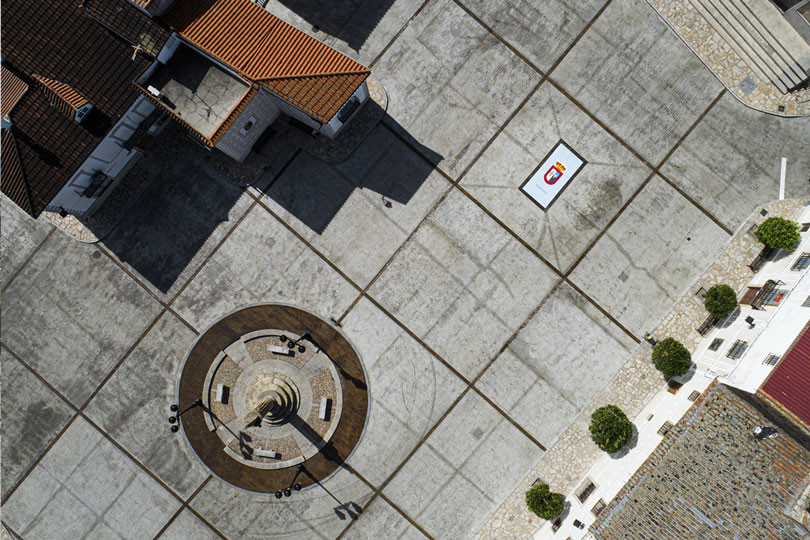
Aerial view of the Plaza de España
The Pillory
An interesting stone monument dating back to 1565, symbolizing the civil and penal jurisdiction of the Lordship. It consists of a thick cylindrical pillar made of fine granite with unevenly textured striations. On the drum that crowns it like a capital, three hooks project, representing three lion heads.
There is no historical record of any criminal process resulting in an execution where the head would hang from one of these hooks.
The Pillory changed its location in 1968, during the mayoralty of Mr. Marcelino Ciriero. Its previous location was next to the eastern facades of the Plaza de España.
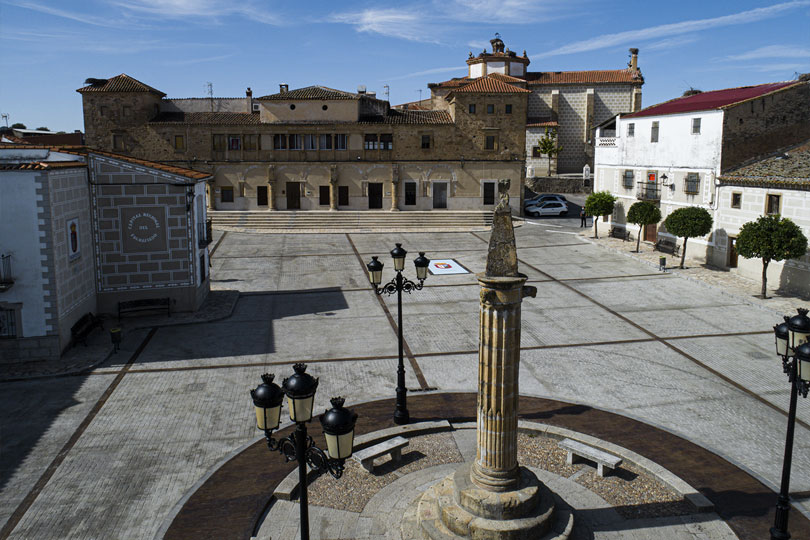
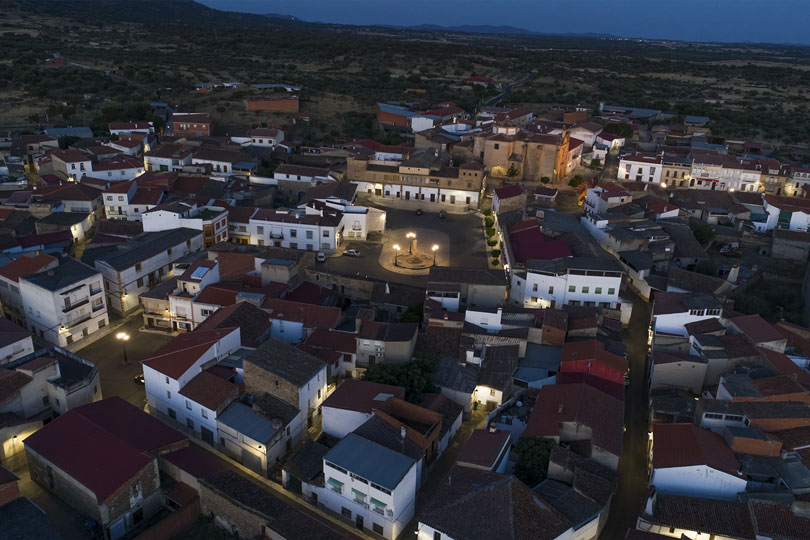
The Palace of the Marquis of Valdefuentes
Dominating the square, it began construction in 1568 (16th century).
It has two stories. In its initial construction, the ground floor featured an arched portico composed of ten semicircular arches supported by columns, while the upper floor had a beam gallery with graceful Renaissance columns. In 1926, it was sold by the Marquis of Valdefuentes to private individuals.
Today, the original structure is almost unrecognizable due to works that filled in its semicircular arches. Its heraldic richness is noteworthy, as several coats of arms adorn the façade, all representing the ancient nobility of the Sande family.
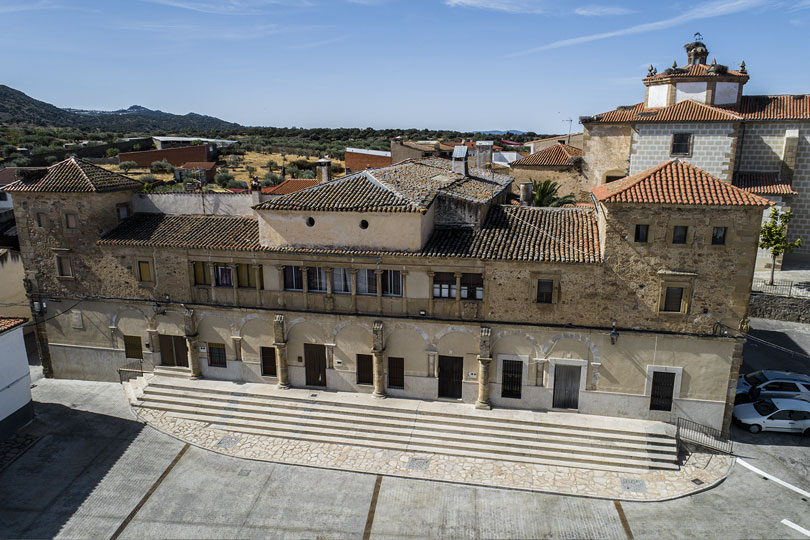
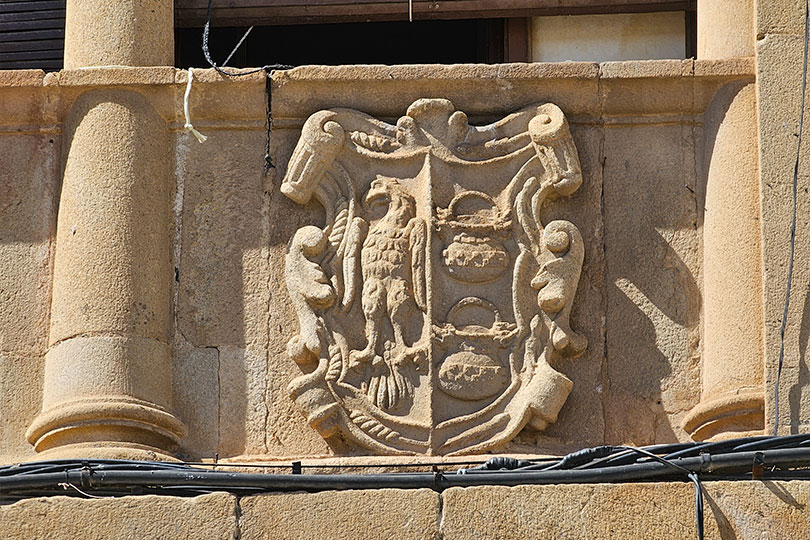
Heraldry
En la columnilla central de la galería alta va colocado el escudo representativo de la antigua nobleza de los Sande y que fue distintivo del de armas de don Álvaro, con las siguientes características: sobre campo de plata, un águila explayada, en su color, con un ramo en el pico, corona de oro y por bordura el cordón de San Francisco. En las columnas extremas, simétricamente colocados, dos escudos iguales, con estos blasones: partido; en el campo diestro, el águila y el siniestro, dos calderas. En los esquinazos de las torres, a dos caras, van también colocados escudos iguales a estos últimos. El significado de las calderas era la de poder tener tropa a su servicio, con la obligación de cuidar, a expensas propias, de su mantenimiento.
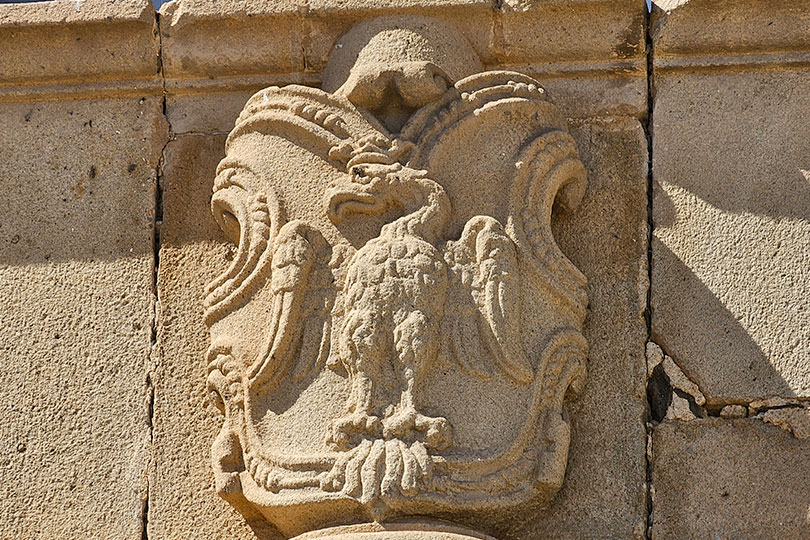
Manor House
Former dependencies belonging to the Marquis of Valdefuentes since the construction of the palace, it served as the old residence of the household, stables, and carriage houses of the palace. Later, it became a guesthouse-tavern until it was demolished in 1933 to become the building we know today. Its architectural style is indefinite or eclectic. It stands out for its symmetry, the use of elongated openings, and decorative cement for the balusters and cornice.

